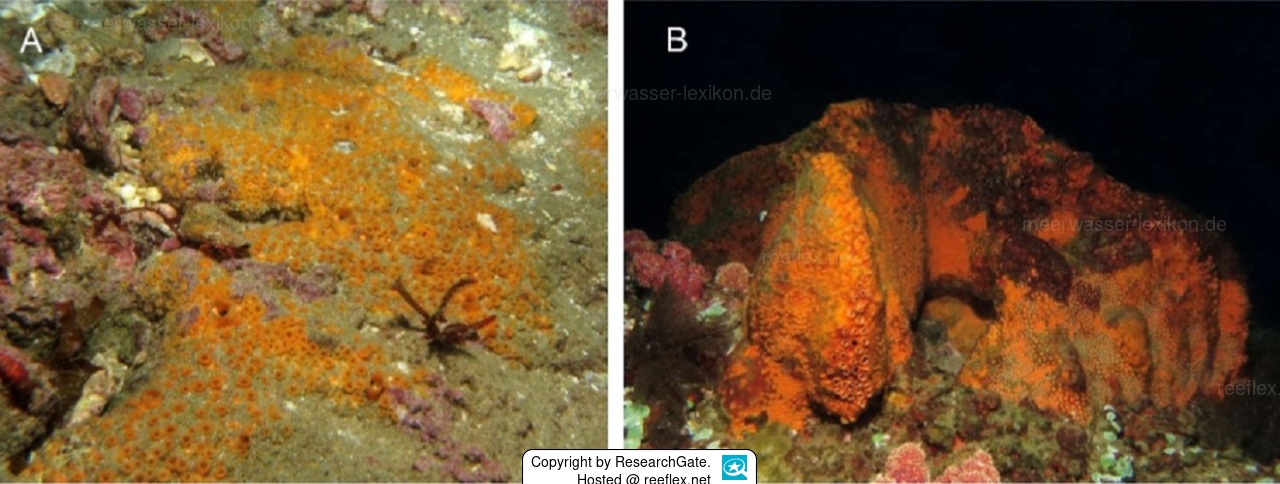Info
With a growth height of 50 cm and a width of up to 70 cm, Cliona grandis is already of considerable size for a marine sponge.
The growth forms of the large sponge are clearly related to the main direction of water movement.
Color:
There are two main color variations, one ranging from ochre to orange, the other from to pale or light yellow, inside the living sponge is dirty orange.
Distribution:
So far the sponge is only known from Mozambique and South Africa.
Etymology:
The species name “grandis” was given after the large, mountain-like morphology of this species.
Literary source:
Calcinai, Barbara & Belfiore, Giuseppe & Pica, Daniela & Torsani, Fabrizio & Palma, Marco & Cerrano, Carlo. (2020).
Porifera from Ponta do Ouro (Mozambique).
European Journal of Taxonomy. 10.5852/ejt.2020.698.
The growth forms of the large sponge are clearly related to the main direction of water movement.
Color:
There are two main color variations, one ranging from ochre to orange, the other from to pale or light yellow, inside the living sponge is dirty orange.
Distribution:
So far the sponge is only known from Mozambique and South Africa.
Etymology:
The species name “grandis” was given after the large, mountain-like morphology of this species.
Literary source:
Calcinai, Barbara & Belfiore, Giuseppe & Pica, Daniela & Torsani, Fabrizio & Palma, Marco & Cerrano, Carlo. (2020).
Porifera from Ponta do Ouro (Mozambique).
European Journal of Taxonomy. 10.5852/ejt.2020.698.







 ResearchGate
ResearchGate









